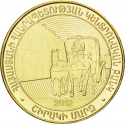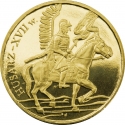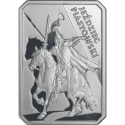You are about to finish your registration. Please check your mailbox (including spam folder). There should be a letter with a confirmation link. Check setting to make sure that your e-mail address is correct.
Send letter againDescription
The Armenian Kingdom of Cilicia, also known as the Cilician Armenia, Lesser Armenia, or New Armenia, was an independent principality formed during the High Middle Ages by Armenian refugees fleeing the Seljuq invasion of Armenia. Located outside of the Armenian Highland and distinct from the Armenian Kingdom of antiquity, it was centered in the Cilicia region northwest of the Gulf of Alexandretta.
The kingdom had its origins in the principality founded c. 1080 by the Rubenid dynasty, an alleged offshoot of the larger Bagratid family, which at various times had held the thrones of Armenia and Georgia. Their capital was originally at Tarsus, and later became Sis. In 1198, with the crowning of Levon the Magnificent of the Rubenid dynasty, Cilician Armenia became a kingdom.
In 1226, the crown was passed to rival Hethumids through Isabella's second husband, Hethum I. As the Mongols conquered vast regions of Central Asia and the Middle East, Hethum and succeeding Hethumid rulers sought to create an Armeno-Mongol alliance against common Muslim foes, most notably the Mamluks. In the thirteenth and fourteenth centuries, the Crusader states disintegrated and the Mongols became Islamized, leaving the Armenian Kingdom without any regional allies. After relentless attacks by the Mamluks in Egypt in the fourteenth century, the Cilician Armenia of the Lusignan dynasty, mired in an internal religious conflict, finally fell in 1375.
Obverse

|
King Hethum I holding a staff mounted on horseback with Armenian legend along the rim with Hetoum's name and status. Հեթում Թագաոռ Հայոց |
|---|---|
Reverse

|
4 lines of Arabic text with the name and title of Kaykhusraw II from the Seljuq clan. ضرب بسيس سنة |
| Edge | - |







